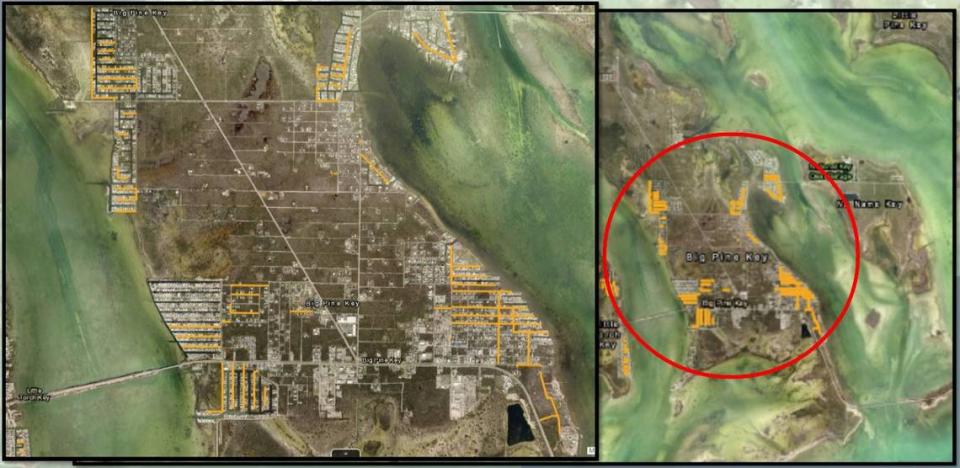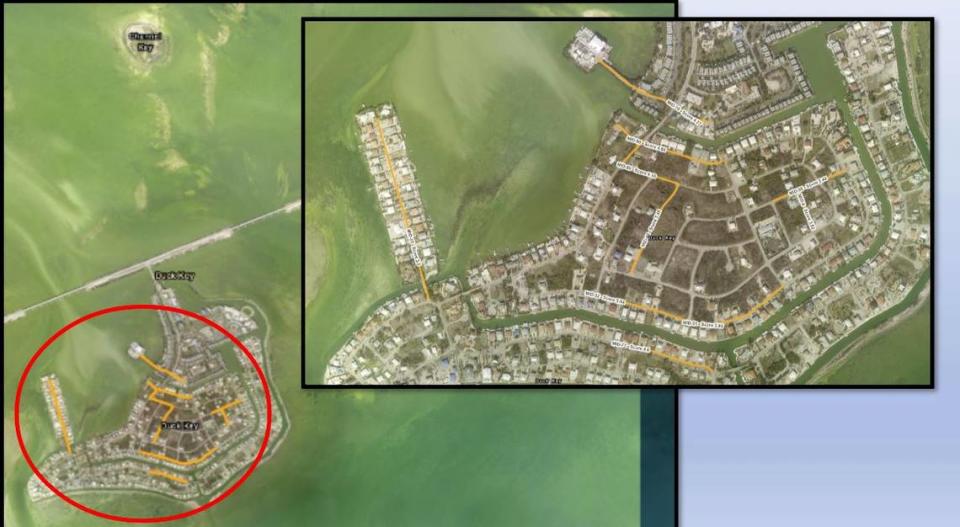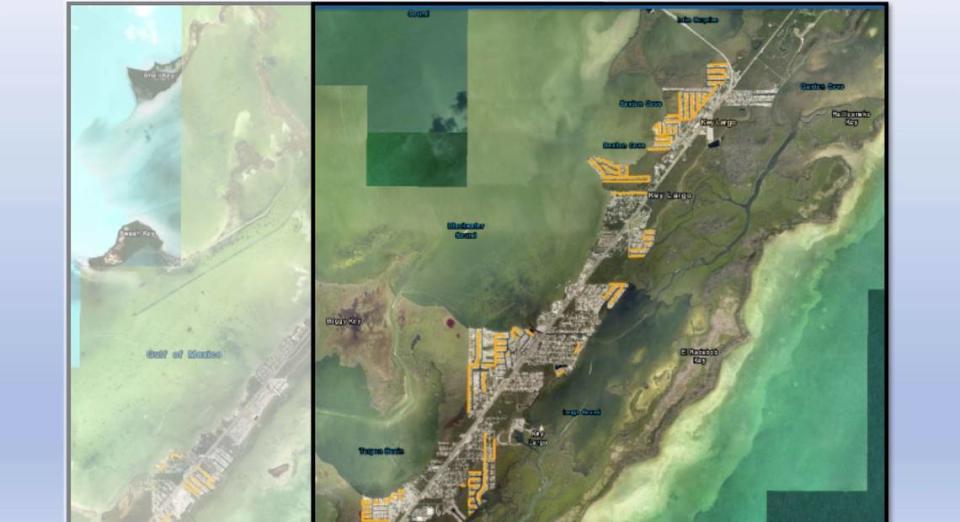Raising Keys roads for sea rise could cost $1.8 billion. Residents may pay much of that bill
The latest estimate for elevating Monroe County’s roads above rising sea levels is $1.8 billion. And that only covers half of them.
In the most vulnerable county in the most vulnerable state, the conversation about adapting to climate change is all about money. Specifically, where can we find it? Residents may not like the answer.
This month, Monroe County commissioners voted to look into the possibility of special assessments on neighborhoods in need of higher roads and new flood pumps, and the price per home could be as high as $5,000 a year. Monroe is also looking into raising taxes for everyone in the island chain, which would require permission from the Legislature and Monroe voters.
“I feel that we, unfortunately, might need to raise additional funds in next year’s tax ratings for these projects. We need to start earmarking money and say yes, we’re going to start paying for it,” Mayor Michelle Coldiron said in a November meeting where the commission discussed money-making ideas and costs.
This Keys neighborhood has been flooded for more than 90 days. Is relief coming soon?
For residents in neighborhoods that have seen as much as 60 days of consecutive flooding this year, help can’t come soon enough.
Stephanie Russo, a lawyer in Key Largo, has experienced flooding in her neighborhood since she and her husband first bought their home in 2015. On the worst days, when rain collides with high tide, delivery drivers can’t make it to their door. Sheriff’s officers won’t patrol the neighborhood because they worry about damage to their cars, although they will come in an emergency.
Russo said she’s OK with paying extra for the needed upgrades, but she’s not sure if several thousand dollars a year — per home — is feasible.
“I don’t know if everyone in my neighborhood can afford the potential assessments we’re looking at here,” she said. “If there’s going to be a special assessment of any amount, they have to figure out how to get this price down.”
A mounting bill
Elevating roads to withstand sea rise driven flooding has always been pricey. In Miami Beach, elevating roads, installing pumps and planting landscaping in the small Sunset Harbour neighborhood cost at least $31 million.
In the Keys, elevating to a standard that would keep roads dry in a 2045 king tide, when sea rise is predicted to be nearly a foot higher, is even more expensive. The older roads are usually just asphalt on dirt, with no way to drain water. New roads need a complicated system of pumps and pipes to drain and treat the water — a higher standard than mainland roads.
In 2018, the estimated cost was around $3 million to elevate less than a mile of road. Last year, that estimate was revised to $42 million a mile, prompting a frank discussion about how many roads can actually be raised and how many will be abandoned to the higher tides.
The latest accounting from Monroe County shows that elevating about 155 miles of county road could cost $1.8 billion, a cost of about $11 million a mile. While that’s definitely a better number than the 2019 estimate, it’s still out of reach for a relatively small county.

“As I look at our fundraising ability as opposed to our anticipated expenditures for sea level rise over upcoming years, the figures don’t match very well,” Monroe County Commissioner David Rice said at the November commission meeting.
He was met with a chorus of “mm-hmms” from the other commissioners, who had just heard a presentation about how the county could raise money for the billions of adaptation necessary to stay ahead of sea level rise.
One option is raising property taxes, which could net up to $100 million dollars by 2024. Monroe could also extend its 1% infrastructure sales tax, which is sunsetting soon, like Miami did with its Miami Forever Bond. The new bond could give the county another $200 million if extended a full 30 years and would keep taxes flat.
The Keys face huge and looming bill to survive sea rise. They’re asking Florida for help
The county could also tack on another 1% tax just for climate adaptation, which could raise another $300 million. That would raise Monroe’s taxes to 8.5%, except on grocery or pharmacy bills. It would also require permission from Tallahassee either this upcoming session or next session to put the measure to a county-wide vote.
And then there are more targeted taxes. When Monroe County switched all of its septic tanks to sewage pipes — a $1 billion affair — homeowners were charged about $500 each, said County Administrator Roman Gastesi.

This is more expensive.
Monroe is looking into taxing the residents of two of the most flood-prone spots in the county, the places in line for the first flooding upgrades: the Twin Lakes neighborhood in Key Largo and Key Sands neighborhood in Big Pine.
In Key Sands, there are about 400 properties in the area where the roads will be raised, at a cost of $8 million dollars. Split among the homeowners, that would be $2,664 a year. Monroe applied for a federal grant that would cover three-quarters of the cost. If it gets the grant, the price per household could get knocked down to $656 a year.
Twin Lakes has fewer residents — about 105 — and about the same costs at $7.3 million. Split evenly, each homeowner would pay about $5,000 a year. Grants would help lower that to about $1,250.

First steps
The first bite of the road raising apple is 78 miles of roads identified by consultants as the most in need. These roads, spread throughout the upper, middle and lower keys, make up about a quarter of the county’s total roads that need to be raised.
The consultants crunching the numbers for the county said they’ll be back with an estimated price for those roads in the Spring. By the Fall, Monroe should have a draft plan for raising all its flood-prone roads.
That’s where the conversation about which roads should be saved and which could potentially be abandoned will continue, said Monroe County Chief Resilience Officer Rhonda Haag.
“If it comes back astronomically high at that point we might need to think of certain projects that we wouldn’t move forward with,” she said.

